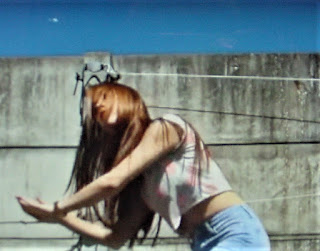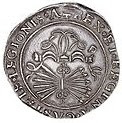Late
last night (October 2) I received a comment to my last post about Treasure Quest (which now has Snake
Island appended to it again). Todo Segalla suggested he had seen the October 5
episode and that, according to him, they had found the treasure. He wrote, “Kevin
They found the treasure. I saw the episode that airs Oct. 5, they found the
cave… using the drone they located another hill with a cave inside… silver coins,
gold bars… it’s flooded and requires expert diving to recover all the treasure.
CONGRATS!”
 |
| Todo Segalla (I hope) |
I
don’t know who Todo Segalla is or how reliable this information he has provided
is. I do know that in the past, on the treasure hunting shows, we have been
teased with big finds that later turn out to be less than spectacular. Remember
the old Treasure Quest when they
found the Inca sun god icon that they suggested could be worth as much as a quarter
of a million dollars, little, silver llamas, and a suggestion that they had
found the Treasure of the Trinity… and then nothing.
But
the Internet is a wonderful tool and I was able to find something about Todo
Segalla, if this is, in fact, the same guy. He was born in Hartford, Connecticut,
on June 9, 1963. It is suggested that he is a Navy veteran and, of course, was
a SEAL… possibly. The Imdb noted that the time of this service is unknown and
that he doesn’t talk about it much. He is now a Federal Police Office with the
Department of Veteran Affairs. He has abandoned his award-winning acting and
his renowned Martial Arts training.
In
trying to learn more about this, after looking up Segalla, I blundered into the
Discovery Channel website. I noticed that the Friday (Oct 5) episode was
available. It was called “Payday.” I clicked on it, of course, and it took me
to a list of cable suppliers. Mine was there and I clicked on that. It asked me
to sign in but I wasn’t ready to do that but apparently the site checked and
the next thing I knew, the episode, commercials and all, was playing on my
computer…
So…
Spoilers
Below…
We
started with Jeremy Whalen entering the hole they had made in the tunnel, which
is where we had left off the week before. He has apparently fallen and another
of the treasure hunters repels down after him. Whalen has lacerated his back, a
place on his head, and they start calling for the medic. She arrives, advises that he get out of the tunnel, but Whalen rejects that. She apparently stitches him up, and off they all go.
This
is just another proof that this isn’t just four guys in the wilderness hunting
for a treasure. There is a large support team with them, so much of the drama
is artificial, but at this point I’m not sure that I care.
The
medic patches up Whalen, and then the rest of the team and the camera crew and
the sound guy join them. It’s probably getting pretty crowded down there. They
begin the search, find a big hairy tarantula that worries them greatly, but
they get it out of the way to continue the journey.
They
realize that there are markings on the wall that suggest the high point of
water, which is no longer present. They are walking in mud, which tells them
the water was there not long ago… and it’s raining outside meaning that more
water might enter the cave.
And,
as before, they reach the end of the tunnel. This time, however, they realize
that it is an artificial wall that isn’t all that thick. Jack Peters, the demo
guy, said that he could surgically remove part of the wall so that they could
look beyond it for booby traps and they would be able to see deeper into the
tunnel.
He
has three sticks of dynamite, det cord and other supplies with him, or so it
seems. In fact, they seem to have a lot of equipment in that tunnel that we don’t
see until they need to do something more. Just one more proof that we’re
watching television rather than an expedition into the wilderness as they keep
telling us. But, again, I’m not sure that I care about that anymore.
They
successfully take down about half the wall, and beyond it, they see the
underground lake. Now they are stymied because they don’t like the look of the
water, which might have been there for a long time, filled with bacteria and
other toxins which could lead to serious illness. Shawn Cowles wonders about
flesh eating bacteria and I have to say, I think he’s got a point.
Whalen,
however rigs a way to explore the lake just beyond where they are using the
underwater metal detector which I’m not sure they had with them when the
climbed into the tunnel. Almost immediately he gets a hit, and the rig a way to
scoop the soil from the bottom of the lake. They bring up a Spanish coin and we
get a lecture on Pieces of Eight.
They
continue in that mode, find I think, another half dozen silver coins, which a
massive treasure they do not make. I’m wondering if this was a treasure horde,
why are the coins scattered in the dirt. Seems more like coins dropped by
accident, but then, why are there so many so close to that wall.
Whalen
wants to dive into the lake, but Cowles said, “No.” He’s the expedition leader
and won’t allow it. Too dangerous. They work out a compromise and Whalen drops
into the freezing water. He walks around and using a Go Pro on a stick, films
underwater. He eventually reaches a place where it seems the bottom drops out.
If
I have this correctly, they take the boom from the sound guy, and rig a way to
measure the depth. Sound guy? Someone else in there with them. The real point
however, is that their measurement suggests the bottom is under a hundred feet
of water. Given that, given the rain coming down, and given the temperature of
the water, they had to abandon the search. They’ve had some success, believe
they are on the doorstep, but they just can’t get there.
They
go back to their base camp, load their pick-up truck… pick-up truck? Where did
that come from? I thought this was such a remote area with no roads. I thought
they had to pack in using burros. They do seem to have gotten a number of vehicles
into the area based on what we’ve seen over the last couple of weeks.
 |
| Colibri Hostal, Quime, Bolivia |
As
the rain comes down and the storm breaks, they head to Quime and the Colibri
Hostal (20 bucks a night) where Whalen is reviewing the footage from the Go Pro
on his computer. He stops, goes back, enhances, and calls to the others. Excited,
they run down the porch (veranda?) looking for Cowles. Whalen shows him what
looks to be a gold bar somewhat obscured by the murky water. Oh, don’t get me
wrong, what we see there looks just like those ingots pulled up from wrecks of
Spanish treasure ships… and there are hints of other bars beneath it.
They
have found the treasure. Or so they say. They certainly seem to have done
better than the guys at Oak Island. We don’t know because the rainy season
drove them from the site, and they need specialized diving equipment to get to
the bottom of that lake. It will take weeks, if not months and a pile of cash
to arrange for the equipment and the diving expert, though Cowles might be
qualified in that arena.
Given
what Cowles has said, it seems that this is the end of the line for this
season. They won’t be back in the Sacambaya Valley any time soon. They have to
arrange for the diving expedition. I confess that I am intrigued by their finds
in the tunnel even though they only came out with a few silver coins and
underwater pictures of ingots that might be gold. Now we’ll have to wait for
next season to learn just what they have found. I hope it turns out better than
the last expedition on Treasure Quest
where it seemed they were on the verge of a huge discovery only to have the show
semi-cancelled, replaced by this version.
Oh,
and to Todo Segalla, they didn’t find the treasure. They found evidence
suggesting there is something more there, but they didn’t find two billion
dollars of stuff. As I say, I’m intrigued, but not convinced yet… of course,
this will ensure a second (or is it fourth) season.

































